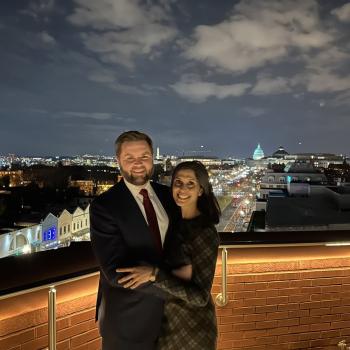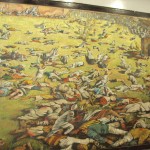I think as is the wont of most western thinkers and scientists – “frameworking” becomes important for understanding. Aldous Huxley by giving “tenets” to Perennial Philosophy has done that.
The Sanatan Dharma concept is a little different in that it says that the truth was when no one knew of it.. and it will be there when everyone would forget about it.. something like Gravity. So in that sense the truth .. is without beginning and without end!
Perennial Philosophy (PP) implies a common denomination that is at the base of all religions.
The Perennial Philosophy (Latin philosophia perennis) is the idea that a universal set of truths common to all people and cultures exists. The term was first used by the German mathematician and philosopher Gottfried Leibniz to designate the common, eternal philosophy that underlies all religious movements, in particular the mystical streams within them. The term was later popularized by Aldous Huxley in his 1945 book The Perennial Philosophy. The term “perennial philosophy” has also been used to translate the concept of the “eternal or perennial truth” in the Sanskrit Sanatana Dharma.
The concept of perennial philosphy is the fundamental tenet of the Traditionalist School, formalized in the writings of 20th century metaphysicians Rene Guenon and Frithjof Schuon. The Indian scholar and writer Ananda Coomaraswamy, associated with the Traditionalists, also wrote extensively about the perennial philosophy.
Main Principles
According to the tenets of the perennial philosophy, humans in many cultures and eras have experienced and recorded similar perceptions about the nature of reality, the self, the world, and the meaning and purpose of existence. These similarities point to underlying universal principles, forming the common ground of most religions. Differences among these fundamental perceptions arise from differences in human cultures and can be explained in light of such cultural conditioning.
Among these perceptions are the following assertions:
* The physical or phenomenal world is not the only reality; another non-physical reality exists. The material world is the shadow of a higher reality which cannot be grasped by the senses, but the human spirit and intellect bear testimony to it in their deepest core.
* Humans mirror the nature of this two-sided reality: while the material body is subject to the physical laws of birth and death, the other aspect of human existence is not subject to decay or loss, and is identical to the intellect or spirit, which is the kernel of the human soul. In the West, this second or other reality has been frequently discounted or ignored.
* All humans possess a capacity, however unused and therefore atrophied, for intuitive perceptions of ultimate or absolute truth, and the nature of reality. This perception is the final goal of human beings, and its pursuit and development are the purpose of their existence. The major religions try to establish the link between the human soul and this higher and ultimate reality. This ultimate reality in the Abrahamic religions (Judaism, Christianity and Islam) is called God; God is the Absolute principle from which all existence originated and to which all existence will return. In non-theistic religions such as Buddhism and Taoism, the ultimate or absolute is characterized somewhat differently.These worldwide perceptions are thought to be valid or reliable because of their consistency and due to the similarities among them in spite of their often independent origins.
According to Huxley, the perennial philosophy is
the metaphysic that recognizes a divine Reality substantial to the world of things and lives and minds; the psychology that finds in the soul something similar to, or even identical with, divine Reality; the ethic that places man’s final end in the knowledge of the immanent and transcendent Ground of all being — the thing is immemorial and universal. Rudiments of the Perennial Philosophy may be found among the traditional lore of primitive peoples in every region of the world, and in its fully developed forms it has a place in every one of the higher religions (The Perennial Philosophy, p. vii).















